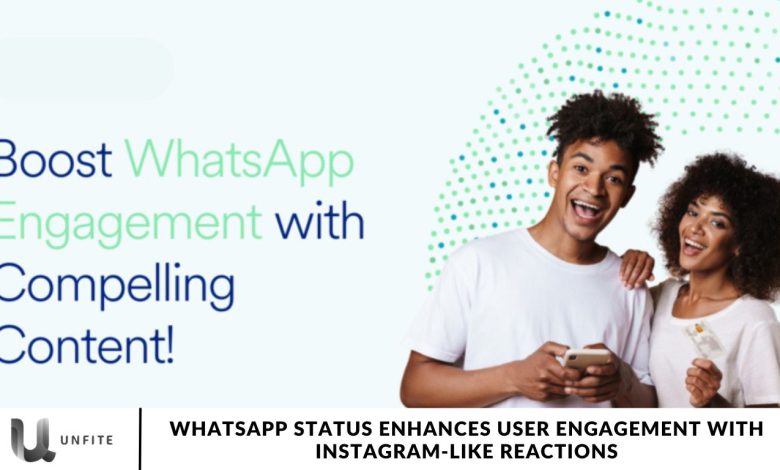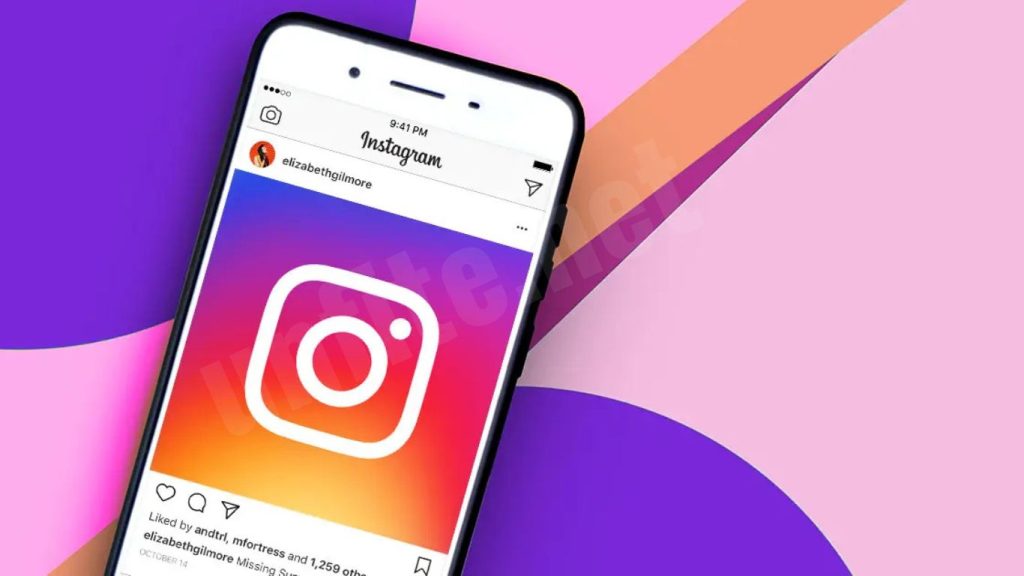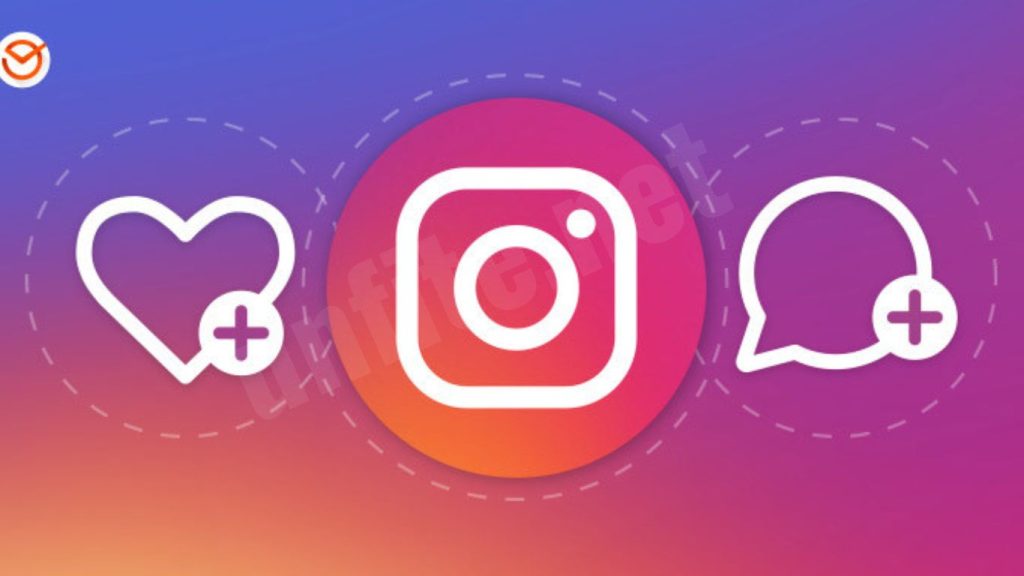WhatsApp Status Enhances User Engagement with Instagram-Like Reactions

Whenever we want to react quickly to someone’s WhatsApp Status, we often find ourselves pondering which emoji to use 🤔. Fortunately, this dilemma is about to be resolved with the introduction of WhatsApp’s new Instagram-like reaction feature 🎉, enabling users to respond to statuses with ease. This feature operates just like the reactions you can give on Instagram Stories 📸.
Previously, responding to a WhatsApp Status required typing out a text message 📝. However, with the new reaction feature, you can now instantly send a reaction to any of your friend’s or relatives’ statuses 💬. Let’s dive deeper into the details of this exciting new WhatsApp Status quick reaction feature! 🚀
WhatsApp Status Gets Instagram-like Reaction Feature
Not long ago, we shared that a new feature was coming in the beta version 2.24.6.19 of Android, which would notify users when they are mentioned in a status update 🔔. Now, WhatsApp is enhancing the user experience even more by introducing a quick reaction feature! 🎉
Just like on Instagram, where you can react to someone’s story with a simple like button ❤️, WhatsApp is getting ready to launch a similar button for reacting to status updates. 👍
This feature is still in development 🔧 but is expected to roll out to everyone soon 🕒. So, instead of just typing a text reply to statuses, you’ll be able to react effortlessly! 💬✨
How does WhatsApp’s status quick reaction feature work?
As seen in the screenshot 📸, WhatsApp is developing a new feature that allows us to react quickly to statuses! 🎉 Users will find a “Heart-Shaped Like Button” in the status section ❤️.
With this feature, you can express your reaction directly while viewing someone’s status 👀. These reactions will not appear in the chat; instead, they’ll be located right below the status itself 📲.
Now, if you love or find someone’s status amusing 😂, you can tap the heart to share your reaction! This feature will help keep the chat clean while making it easier to engage with statuses! ✨
Benefits of WhatsApp New Feature

Status updates are a popular feature on WhatsApp, and this new reaction feature will make interactions even more engaging! 🎉 Let’s explore some of its benefits:
Fast and Easy Responses
Instead of typing out messages or sending voice notes 🎤, this feature offers a quick and simple way to react to statuses instantly! ⚡
Less Clutter in Chats
Often, statuses only need short replies like “Achcha hai” or “Wow” 😮, which can clutter your chat history 📚. This reaction feature will be super helpful in keeping conversations tidy!
Time-Saving
It can sometimes take a while to figure out how to respond to a status ⏳. With the reaction feature, users can choose an emoji and express their feelings in no time! 😊
When can we expect this feature?
So far, WhatsApp hasn’t made any official announcement about rolling out this feature 🤔. Since it’s still in the beta testing phase 🛠️, it may take some time before users can use it. However, there’s a good chance that WhatsApp will release it to everyone soon! 🌟
The WhatsApp Status quick reaction feature is not only useful but also entertaining 🎉, as it will enhance user interaction and make the Status experience even better! 💬✨
What Are WhatsApp Status Updates?
Explanation of WhatsApp Status and Its Functionality
What is WhatsApp Status?
WhatsApp Status is a feature that allows users to share photos, videos, and text updates with their contacts for a limited duration of 24 hours ⏰. Unlike regular messages, which are sent directly to individual or group chats, Status updates are broadcast to all contacts who have saved the user’s phone number 📱. This feature provides a more visual and engaging way for users to share their moments, thoughts, or news! 🎉
Functionality:
- Content Types: Users can post various media types, including images 📸, videos (up to 30 seconds long 🎥), GIFs, and text updates 💬.
- Visibility: Users can control who sees their Status updates by adjusting privacy settings 🔒, allowing them to share with all contacts, selected contacts, or only their saved contacts.
- Interactivity: Viewers can respond to Status updates through direct messages, creating a seamless way to engage with content 🤝.
- Ephemeral Nature: After 24 hours, the Status update disappears automatically, encouraging users to post frequently and keep their content fresh 🔄.
Brief History of WhatsApp Status
Launch of the Feature:
WhatsApp introduced the Status feature in February 2017 🗓️, taking inspiration from Snapchat Stories and later adopted by Instagram. The goal was to enhance user interaction by allowing users to share updates in a more dynamic and engaging format 🌟.
Evolution Over Time:
- Initial Launch: The original version of WhatsApp Status allowed users to set a text-based status message (e.g., “Available,” “Busy”) that was visible to contacts.
- Transition to Multimedia: The introduction of multimedia Status updates marked a significant shift, enabling users to share richer content and express themselves creatively 🎨.
- Improvements: Over the years, WhatsApp has made various updates to the Status feature, including the addition of drawing tools ✏️, text formatting options, and enhanced privacy settings 🔧.
Impact on User Interaction
Increased Engagement:
WhatsApp Status has become a vital tool for enhancing user engagement 🚀. By providing a platform for users to share snippets of their lives, it encourages more interaction compared to traditional text messaging. Users are more likely to view and respond to visual content, leading to a higher level of engagement with contacts 🤗.
Social Connectivity:
The temporary nature of Status updates creates a sense of urgency ⏳ and encourages users to check their contacts’ updates regularly. This fosters a sense of community and connectivity, as friends and family can share real-time moments and experiences 👫.
Business Use:
Businesses have also adopted WhatsApp Status as a marketing tool 📈, using it to share promotions, product launches, and behind-the-scenes content 🎉. This has opened new avenues for customer engagement and brand visibility, allowing businesses to connect with their audience in a more personal and interactive manner 🤝.
The New Instagram-Like Reaction Feature
Here’s a detailed description of the new reaction feature on WhatsApp, including the types of reactions available and a comparison to Instagram Story reactions:
Description of the New Reaction Feature
The new reaction feature on WhatsApp allows users to respond to Status updates with emojis, making interactions quicker and more expressive. Instead of sending a text reply, users can tap an emoji to convey their feelings about a friend’s status. This feature is designed to enhance user engagement by providing a more dynamic way to communicate emotions and feedback, similar to reactions seen on other social media platforms.
Types of Reactions Available
The WhatsApp reaction feature will offer several emoji options for users to choose from, including:
- ❤️ Heart: A classic way to show love or appreciation for someone’s status.
- 😂 Laughing Face: Perfect for reacting to funny or entertaining content.
- 😮 Surprised Face: Ideal for expressing shock or amazement at a status update.
- 😢 Crying Face: A way to convey empathy or sadness regarding the content shared.
- 🔥 Fire: Used to indicate something is exciting, impressive, or “lit.”
- 👍 Thumbs Up: A simple acknowledgment or agreement with the status.
These reactions are intuitive and allow users to express their feelings succinctly, enhancing the overall user experience on the platform. 🌟
Comparison to Instagram Story Reactions
WhatsApp’s reaction feature draws heavy inspiration from Instagram Story reactions, and here are some critical comparisons:
- Similar Functionality: Both platforms allow users to react to content with emojis, creating a more interactive and engaging experience. Just like on Instagram, users can quickly respond to a story without typing out a complete message.
- Types of Reactions: While Instagram offers a broader array of emoji reactions, including the option to send a direct message along with the response, WhatsApp is focusing on a select few emojis to streamline the process and keep it simple.
- Visibility of Reactions: On Instagram, reactions to stories can be seen by the store owner and are often accompanied by a notification. In contrast, WhatsApp reactions do not appear in chat but are displayed directly below the status update, helping to maintain a cleaner chat interface.
- User Experience: Both features aim to enhance user engagement, but WhatsApp’s focus on maintaining a less cluttered chat history sets it apart. It prioritizes direct interaction with statuses rather than encouraging lengthy conversations.
Benefits of Instagram-Like Reactions for WhatsApp Users

Fast and Easy Interaction
How the Reaction Feature Simplifies User Responses
The new reaction feature on WhatsApp significantly simplifies how users respond to Status updates. Instead of crafting a thoughtful text reply, users can quickly tap an emoji that best represents their feelings—whether it’s joy, surprise, or admiration. This streamlined process allows for immediate feedback, making interactions feel more spontaneous and less formal. For example, a friend shares a funny video, and instead of typing “That’s hilarious!” you can hit the 😂 emoji. This encourages a more casual communication style and fosters a more engaging user experience.
Importance of Quick Communication in Today’s Digital Landscape
In our fast-paced digital world, quick communication has become paramount. Users often juggle multiple conversations and platforms, making instant responses more valuable than ever. The reaction feature aligns with this need by enabling swift interactions, helping users stay connected without the burden of lengthy text exchanges. This efficiency is critical in maintaining relationships, as timely responses can enhance feelings of connection and engagement among users. 🌍💬
Reduced Clutter in Chats
Explanation of How Reactions Help Keep Chat Histories Clean
One significant benefit of the reaction feature is its ability to keep chat histories organized and free from clutter. Traditional responses often result in lengthy threads filled with short replies that can overwhelm conversations. By using reactions instead, users can express their thoughts without adding more text to the chat, keeping discussions focused and less chaotic.
Examples of Short Replies That Reactions Can replace
Consider these standard short replies that can now be replaced with a quick emoji reaction:
- Instead of replying with “Nice!” users can tap the 👍 emoji.
- Rather than saying, “So funny!” users can respond with the 😂 emoji.
- Instead of typing “I love this!” users can use the ❤️ emoji.
This change not only enhances the visual appeal of chats but also encourages users to engage more often without feeling the pressure to respond with full messages. ✨
Increased User Engagement
Statistics on User Engagement in Social Media with Reaction Features
Research shows that platforms offering reaction features tend to see higher user engagement rates. For instance, Facebook reports that posts with reactions receive 33% more comments than those without. Similarly, Instagram users often engage more with Stories that prompt reactions, indicating that visual feedback creates a more dynamic interaction. These statistics highlight the effectiveness of reactions in fostering a more engaging online environment. 📊📈
How Reactions Can Encourage More Interaction with Statuses
The addition of reactions to WhatsApp Status updates is expected to boost user engagement significantly. When users feel that responding is quick and easy, they are more likely to engage with content frequently. This feature allows for more interactions without the need for lengthy conversations, encouraging users to check their friends’ statuses more regularly and respond accordingly. With this ease of interaction, WhatsApp can enhance the overall user experience, promoting a vibrant and interactive community on the platform. 🌟
Frequently Asked Question
What is the new reaction feature on WhatsApp Status?
The new reaction feature allows users to respond to Status updates with emojis, similar to how they can react to Instagram Stories. This feature simplifies interactions by enabling quick and expressive feedback without typing out text replies.
How do I use the reaction feature on WhatsApp Status?
To use the reaction feature, view a friend’s Status and tap on the emoji icon that appears. You can then select from a variety of emojis to express your reaction instantly.
What types of reactions are available on WhatsApp?
WhatsApp offers several emoji reactions, including ❤️ (Heart), 😂 (Laughing Face), 😮 (Surprised Face), 😢 (Crying Face), 🔥 (Fire), and 👍 (Thumbs Up). These emojis allow users to convey their feelings quickly.
How does the reaction feature improve user engagement?
By allowing quick and easy responses, the reaction feature encourages more frequent interactions. Users are likely to engage with Status updates more often when responding is as simple as tapping an emoji.
Will my reactions be visible to others?
Yes, your reactions will be visible to the user who posted the Status. However, they will not appear in the chat history, keeping the conversation cleaner and more focused.
How does this feature compare to Instagram Story reactions?
Both platforms allow users to react with emojis, creating an interactive experience. However, WhatsApp’s reactions are designed to keep chat histories less cluttered, as they do not generate additional text messages.
Is the reaction feature available for all WhatsApp users?
The reaction feature is being rolled out gradually and may not be available to all users immediately. Make sure to keep your app updated to access new features as they become available.
Can I provide feedback on the new reaction feature?
Yes, WhatsApp encourages user feedback on new features. You can provide feedback through the app’s support section or their official website, helping improve future updates.
How does the reaction feature affect my chat history?
The reaction feature helps maintain a cleaner chat history by minimizing short text replies. Instead of cluttering conversations with multiple brief responses, users can react to a Status.
Will using reactions affect my privacy on WhatsApp?
No, using reactions does not change your privacy settings. Your responses to Status updates will only be visible to the person who posted the Status, maintaining your privacy while allowing for interactive engagement.
Conclusion
The introduction of Instagram-like reactions to WhatsApp Status significantly enhances user engagement by offering a more interactive and expressive way to respond to content. This feature simplifies communication, allowing users to convey their feelings quickly and effortlessly through emojis, thereby fostering a more dynamic and spontaneous interaction. By reducing clutter in chat histories and encouraging more frequent engagement with Status updates, WhatsApp not only enriches the user experience but also strengthens the connections among friends and family.
As social media continues to evolve, WhatsApp’s reaction feature positions the platform as a more vibrant and engaging space for users to share their moments and connect. Overall, this innovative enhancement reflects WhatsApp’s commitment to meeting the demands of its users in a fast-paced digital landscape. 🌟📱




